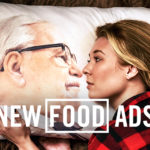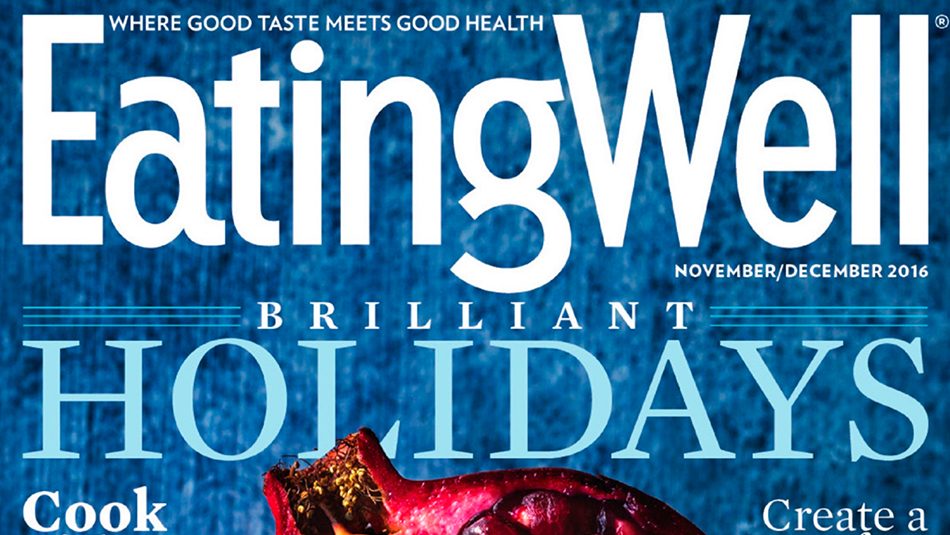
Food Brands Embrace Native Advertising in Print
Native advertising, integrated content, custom content, branded content, advertorial, sponsored by, promotional feature… To the reader, is it advertising or editorial?
As digital and social platforms continue to monetize with native in various forms, the popularity and learnings from digital has spread opportunities to the magazine field.
While print advertorials have been around a long time, more and more publishers and brands are taking advantage of this renewed interest in content. Brands jumping on the bandwagon benefit from higher visibility, greater impact, and improved ROI.
Popularity of native advertising in print rises
The popularity of digital native carries over to most major media. Ads on TV that resembled TV programs were called infomercials, whether long-form (1/2 hour+) or short-form (30 to 60 seconds). In print, we called them advertorial, a blended noun for advertising and editorial. Now the lines blur across all media and “native” is the new moniker for a print advertorial, too.
Magazines, along with traditional ads, have declined in audience interest. Several publications have stopped publishing, reduced number of published issues, consolidated, or converted to a digital-only format. From an ad sales standpoint, we are seeing publishers being eliminated and category experts created across channels and titles. While none of these changes are new to our business, publishing houses have to innovate or die.
In a recent survey conducted by the Native Advertising Institute, across publishers globally, 90% of publishers across the industry said that native advertising is important to their company.
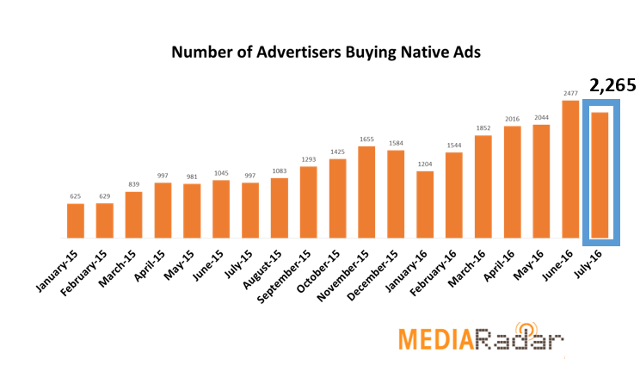
Publishers have had to look at other opportunities to remain profitable. They need to balance profitability, editorial integrity, and consumer experience. Where should they look? Which media is growing exponentially? Digital; specifically native advertising. This has resulted in an increase for native in print. Demand for native is up 262%, according to Media Radar’s August 2016 analysis.
Advertisers select media by analyzing the user involvement with the medium—whether online or off, video or other. Advertising compatible with the editorial content captures more interest, thus generating more awareness and potential purchase consideration.
Not all brands are right for native, however. The food category proves a good candidate, as it offers creativity, many visual options, and a safe environment. According to the Native Advertising Index, food, alcoholic beverages, and pet brands are the most likely to be placing native ads. An average of 20% already place native ads, a significant adoption versus the average of 9% across all categories.
Today’s consumer continues to evolve along with media channels and multiple shopping options benefitting their lifestyle. Integrated campaigns allow the consumer to interact with content and receive more valuable information as it relates to the product. But it’s imperative to develop native that delivers on both the brand message and maintains the trust and integrity of the editorial content.
Working closely with publishers and their editorial staff will improve the quality of the piece. Is it relevant to the reader? Are you providing something new? Is it informative? Does it provide more value for the advertised brand? Is it entertaining? Fun? Does it fit within the publication, advertising media plan strategy and budget?
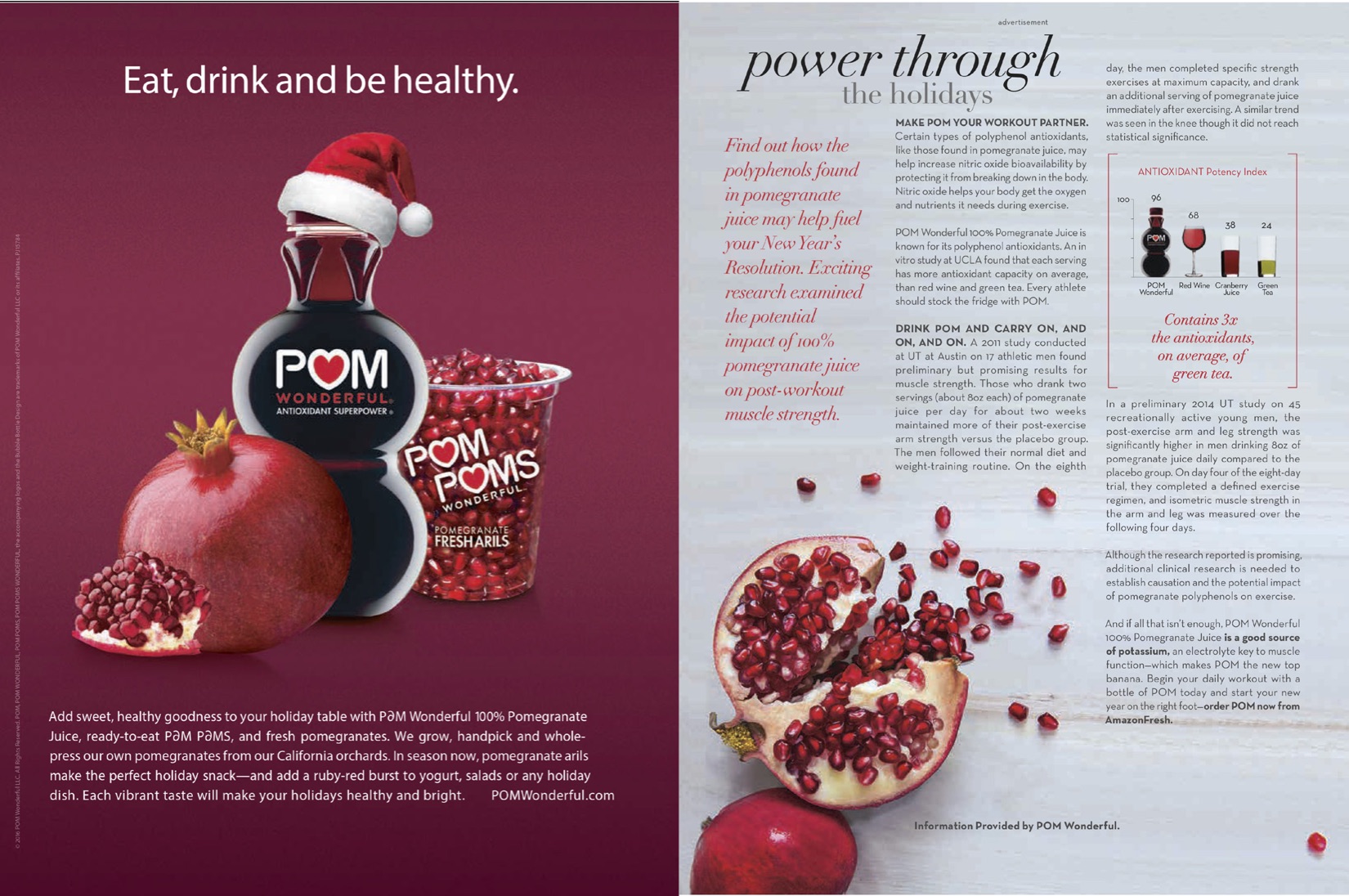 Images courtesy of Eating Well and POM Wonderful
Images courtesy of Eating Well and POM Wonderful
How native advertising fits in with ads
Native can give the brand more visibility, as it takes over more real estate within the magazine and can result in higher impact. When done tastefully, it blends in with the editorial yet is not misleading to the reader. Native is a great complement to an advertising schedule, especially for new product introduction and integrated content information, such as recipes, health-related content for the advertised product, or coupon delivery and special offers.
Research shows that native/advertorial delivers the same or high scores for consumer recall, depending on product and categories, performing as well as ads. Native tends to deliver higher consumer engagement scores when tied to the editorial environment and to a particular time of year—holidays, weddings, and vacations, for example.
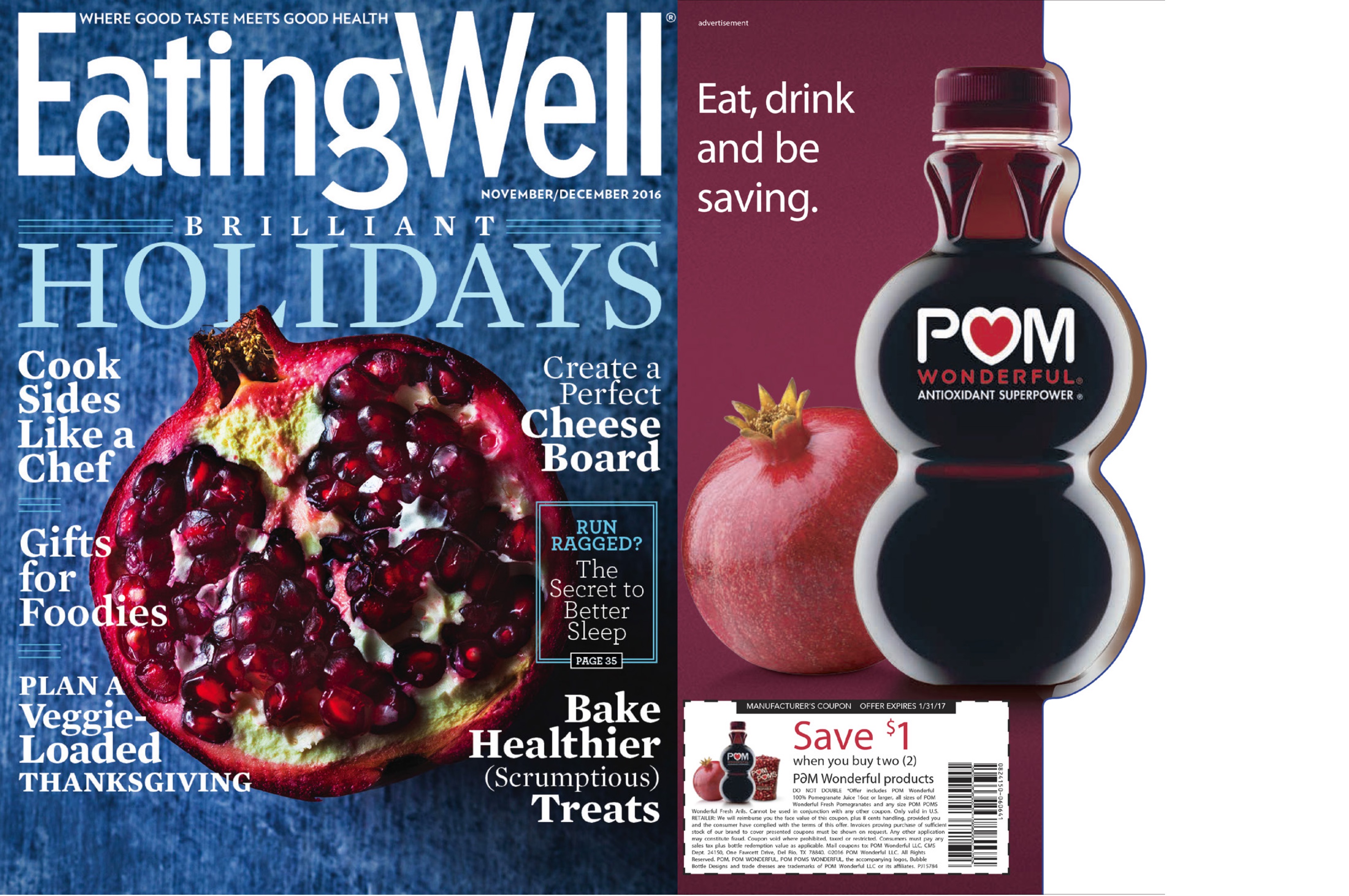 Images courtesy of Eating Well and POM Wonderful
Images courtesy of Eating Well and POM Wonderful
What to know about cost and ROI
The price tag on native units varies. It can be a very efficient buy, as the supplied editorial on an adjacent page is often discounted versus the ad page, essentially delivering a two-page spread unit. However, it can also carry a large premium, depending on content, production complexity, number of pages, full or partial distribution, and positioning within the magazine.
In the November/December 2016 issue of Eating Well magazine, which featured a pomegranate on the cover, POM Wonderful created a die-cut insert and advertorial to complement their ad that was very impactful and most likely very expensive.
Data to measure the ROI on this unit is not available; however, they definitely received close to 100% visibility against their 5.8MM audience, not only for the high impact unit, but also the front cover position. This is a good example of how editorial and advertising worked together on native and provided additional value and a $1 coupon to readers.
Tailor the content to the publication
With native advertising, it’s important to create a piece that is tailor-made for that specific magazine’s look and feel, using authentic content that is creative, fun, entertaining, and meaningful—and not just fluff.
Publications follow guidelines when it comes to native, including advertiser disclosure language and usually brand logo. This alerts the reader that it is a paid placement and not editorial. With the plethora of content today—whether digital, video, or print—the consumer is getting more sophisticated at differentiating sponsored content versus editorial. However, we’re in agreement that advertiser disclosure is necessary.
Native opportunities in print offer brands a new way to be creative and get more of the reader’s attention. It produces a positive environment for the consumer and lets brands choose to inform and try new products. Developing native print content should be a joint enterprise between the advertiser and editors of the publication so that both maintain their brand positioning and integrity. Native content written specifically for the readers of the magazine will associate your brand trust with the magazine’s vision.
Consumers are less adverse to print ads
The beauty of print is that the consumer feels in control of the medium, its edit and ad pages. As of March 2017, print advertising in newspapers and magazines was the least disliked advertising type.
Whether you call it native, integrated, custom, or even advertorial, make it creative and challenge your media partners to provide ideas on how to improve the reader experience. Become smarter marketers together while getting a bigger bang for ad bucks. Native advertising is here to stay for a while, so embrace it.
Bonus: Hailed as one of the first examples of true native, David Ogilvy’s “Guinness Guide to Oysters” debuted in 1951. And it’s still relevant.


